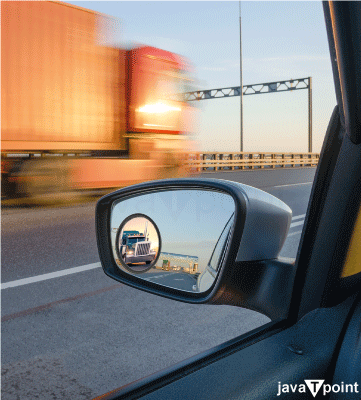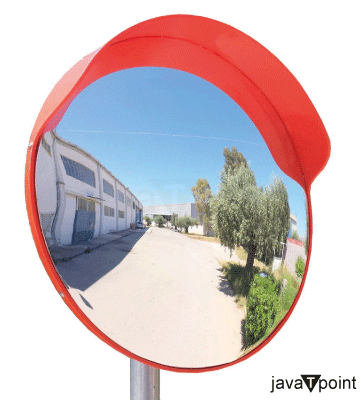Write Five Uses of Convex MirrorIntroduction:Mirrors have always held an intriguing place in human history. Mirrors have evolved alongside our understanding of optics and light, from their early use as reflective surfaces in still water to the modern marvels of polished glass. Among the diverse array of mirrors, the convex mirror stands out as a unique optical device that offers a different perspective on the world around us. A convex or diverging mirror is a curved mirror with a reflective surface protruding outwards. This curvature imparts specific optical properties to convex mirrors, leading to their distinctive characteristics and applications. It is generally spherical in shape, with the center behind the mirror. The outer side of the mirror (with respect to the point of observation) is reflective; meanwhile, the inner side is painted with non-reflective paints (mostly silver) to prevent the light from passing through. In contrast to plain mirrors, which can be said to have a flat surface, spherical mirrors have curved surfaces and are of two types depending on the direction in which the curvature of the center is curved: Convex Mirrors: Spherical mirrors whose center protrudes outwards more than the edges. Concave Mirrors: Spherical mirrors whose center protrudes inwards more than the edges. Convex mirrors are also called diverging mirrors because when parallel light rays fall on the surface of the mirror, they diverge outwards, opposite to the Concave mirror, which converges the light rays. The diverged light rays seem to meet behind the mirror, which is why the image produced is said to be 'Virtual', and the point at which they meet is called the virtual focal point. Since the image produced is virtual, it can not be projected on a screen. The image produced is not only virtual but also upright and diminished in comparison to the object being observed. The actual light rays deflect from their path and travel away from the virtual focal point. Increasing the aperture also widens the mirror's field of view, meaning it can provide a picture of a wide area. Convex mirrors introduce some distortion to the reflected image. Objects at the edges of the mirror appear more stretched or distorted compared to those in the centre. This is due to the curvature of the mirror surface. Five Uses of Convex mirrors:Mirrors have long captivated our fascination, reflecting our appearances and our ingenuity in harnessing light's properties. Among these mirrors, the convex mirror stands out as a versatile optical tool that finds application in a wide array of fields, enhancing safety, enabling creativity, and aiding scientific endeavors. Some uses of convex mirrors are:
Other Uses:
Convex mirrors, when incorporated into telescopes, contribute to celestial exploration. They assist astronomers in directing light from distant stars and galaxies toward the telescope's focal point, facilitating observation and analysis. By capturing and concentrating light, these mirrors offer glimpses into the vast expanse of the universe. Convex mirrors serve as educational aids, enabling students to understand light's behavior, reflection, and refraction. They demonstrate how curvature can alter the reflected image and provide hands-on experience with optics principles. Drawbacks of Using Convex Mirror:
Conclusion:Convex mirrors are spherical mirrors with the curvature at the center protruding outwards more than the edges of the mirror. They diverge incoming light rays and are hence known as diverging mirrors. They produce a virtual, erect, and diminished image of the surroundings. Convex mirrors, due to their ability to provide an image of a wide field of view, have a wide range of applications, especially in the area of safety and surveillance. Some applications of convex mirrors include rearview mirrors, ATMs, and self-service machines, both indoor and outdoor safety, road safety, and entertainment purposes.
Next TopicElectricity Formulas
|
 For Videos Join Our Youtube Channel: Join Now
For Videos Join Our Youtube Channel: Join Now
Feedback
- Send your Feedback to [email protected]
Help Others, Please Share











